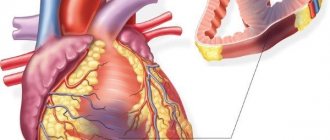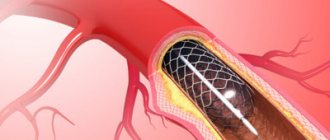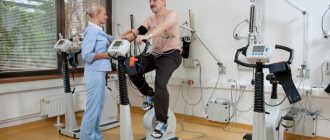A heart attack is one of the most common and complex types of cardiac diseases. After being discharged from the hospital, many people wonder what restrictions they will have to accept with their new lifestyle. In particular, the question of driving a vehicle arises.
This time period is indicated as a guideline when driving is especially dangerous.
Symptoms that indicate a heart attack
A heart attack does not happen suddenly in most situations and can be predicted. Sometimes, symptoms are signaled several weeks before its occurrence.
Insomnia
A person may experience insomnia and feel tired. This may be a warning that the coronary artery is narrowing to a significant extent. Reduced blood flow to the heart causes the heart pump to work harder, causing you to feel exhausted and tired.
Breathing problems
This phenomenon is more common in the female population. The fact is that the respiratory and cardiovascular systems depend on each other, so when the heart receives less blood, there is less oxygen in the lungs themselves. Hence the difficulty in breathing.
Muscle weakness and chest discomfort
Blood flow decreases, which causes a lack of oxygen, so blood circulation suffers. This causes the muscles to weaken. The narrower the coronary artery, the more uneven the blood flow, and all this is manifested by suffocation and chest pain.
Many people who have had a heart attack feel that their lives will not be as comfortable as before. The truth is that after recovery, their lives can be completely normal. You can fully recover, but you must have patience because it takes time.
It is known that when a heart attack occurs, seconds count, and in order to avoid complications, the cause must be eliminated. This means changing your daily habits:
- To begin with, smokers must give up their bad habit.
- To avoid cholesterol buildup, it is important to change your eating habits. Avoid fatty, heavy foods.
- Moderate your alcohol consumption.
- Be sure to have your cholesterol checked every three months. To regulate it, it is recommended to drink red wine - no more than 1 glass per day.
- Green tea also has a beneficial effect on blood vessels.
- Take aspirin, the best time to take it regularly is 21.30 pm.
- Rest an hour after eating.
- If shortness of breath or pain is experienced during exercise, the activity should be stopped until these symptoms subside.
- Light exercises, slow walks and movements will help the patient recover faster.
- A hot water bath is harmful; its temperature should not be higher than the human body temperature.
What group will they give?
There are three disability groups in total, each of which is assigned to the patient if there are strict indications. The criteria that guide the commission are given below.
| Disability group | Working or not | Criteria |
| 3 group | Working | Deviations in the functioning of the heart muscle and the functioning of blood vessels are insignificant and do not affect the performance of professional duties, provided that the person was engaged in light labor or mental activity |
| 2nd group | Working (with restrictions) | The patient experiences periodic attacks of exacerbation (for example, angina), which prevent him from performing his usual work. The heart functions poorly and there is an increased risk of relapse. Transfer to light work is possible subject to periodic maintenance treatment with appropriate notes in the outpatient card |
| 1 group | Non-working | Every day the patient is diagnosed with angina attacks, suffocation and pain in the heart area. Chronic heart failure is diagnosed. Such patients cannot work |
If the patient loses the ability to serve his natural needs, the effect of the therapy used is absent and does not bring relief, and lifelong disability is issued.
Criteria for disability groups
Driving after a heart attack
The first reason why you should not drive when your heart hurts is your own health. Indeed, driving is a physical effort, not very intense, but nonetheless significant. For some people, this effort is already excessive. But in this case, the person will feel unable to drive due to the corresponding symptoms.
On the other hand, there are situations when the affected person feels well and can return to a more or less normal life without being able to drive. It is a risk to others as well as to oneself: in fact, certain heart conditions can cause one to become unconscious and, by driving, one assumes the risk of another heart attack by losing control of one's vehicle. This may lead to an accident.
What are the heart problems that may interfere with driving? Among such conditions are:
- Ventricular arrhythmia or conduction disorder syndrome.
- Angina pectoris.
- Heart attack.
- Implantable defibrillator placement less than 6 months ago.
- Pacemaker installation less than a month ago.
What do the doctor's say?
Doctors have formed a strong opinion that driving a car is one of the stages of rehabilitation after a coronary heart attack, and they allow it. However, driving is allowed if the patient is completely confident in himself, the condition of his coronary vessels and heart allows him to experience stress (for this it is important to be regularly examined, including checking the coronary vessels after a heart attack by coronary angiography).
A person should not have anxiety, fear, or irritation. Only if there is a complete feeling of comfort, is it permissible to start driving the vehicle again.
The approximate period during which you can begin to experience such confidence when driving a car is considered to be 2 months; after this period, you are allowed to drive from a medical point of view.
Traveling on public transport or walking for a long time is not the best solution after a heart attack, and there are many factors that will negatively affect the condition of a heart attack patient: crowding on a bus or subway, the speed of the crowd. It is better to travel comfortably in your own car.
It is recommended to take nitroglycerin and prescribed medications with you when traveling, no matter how far you plan to travel. When returning to driving, do not forget that systematically taking medications is a prerequisite for normal well-being.
Doctors emphasize that after a coronary heart attack there is a risk of a recurrence of the attack, so before you get behind the wheel in each individual case, you need to listen carefully to yourself. If before the trip or during the trip you experience unpleasant sensations: pain in the heart and increased blood pressure, it is recommended to stop and take a prophylactic dose of the medicine.
Doctors have formed a strong opinion that driving a car is one of the stages of rehabilitation after a coronary heart attack, and they allow it. However, driving is allowed if the patient is completely confident in himself, the condition of his coronary vessels and heart allows him to experience stress (for this it is important to be regularly examined, including checking the coronary vessels after a heart attack by coronary angiography).
A person should not have anxiety, fear, or irritation. Only if there is a complete feeling of comfort, is it permissible to start driving the vehicle again.
The approximate period during which you can begin to experience such confidence when driving a car is considered to be 2 months; after this period, you are allowed to drive from a medical point of view.
Traveling on public transport or walking for a long time is not the best solution after a heart attack, and there are many factors that will negatively affect the condition of a heart attack patient: crowding on a bus or subway, the speed of the crowd. It is better to travel comfortably in your own car.
It is recommended to take nitroglycerin and prescribed medications with you when traveling, no matter how far you plan to travel. When returning to driving, do not forget that systematically taking medications is a prerequisite for normal well-being.
Doctors emphasize that after a coronary heart attack there is a risk of a recurrence of the attack, so before you get behind the wheel in each individual case, you need to listen carefully to yourself. If before the trip or during the trip you experience unpleasant sensations: pain in the heart and increased blood pressure, it is recommended to stop and take a prophylactic dose of the medicine.
Who decides about the ability to move after a heart attack or diagnosis of heart disease?
This is a cardiologist who examines a patient suffering from heart disorders. This will be done under stricter criteria for professional drivers than for individuals who only use their vehicle privately.
In some cases, such as implantation of a pacemaker or defibrillator, the inability to drive due to heart problems is temporary and can be reversed after a certain period of time. In all cases, the restriction will also be temporary and will be reviewed after a few years and in the event of new health problems.
After a heart attack, it is usually recommended to engage in regular moderate-intensity exercise at least 5 times a week for a minimum of 30 minutes. Endurance exercises such as cycling, hiking, walking, swimming or running are especially beneficial. Apart from these activities, you can practice muscle building activities with 2 sessions per week.
Although heart attack and physical activity are compatible, and it is advisable to exercise after a heart attack, patients who have had a heart attack should ensure that they do not overexert themselves. Don't hesitate to ask your doctor for advice.
Visiting the bathhouse and sauna
Sauna can be beneficial: regular sessions help lower blood pressure and heart rate, improve the elasticity of blood vessels and strengthen the immune system. In general, the sauna is not prohibited for patients suffering from cardiovascular diseases. However, ask your cardiologist or your doctor to confirm whether you can go to the sauna and from when.
As for the car, it is often an integral part of life. The good news is that most patients return to driving after a heart attack.
When will you be able to return to work?
If your job is physically demanding or stressful, it may be wise not to resume it after a heart attack. However, most patients return to work within two weeks to three months, depending on the severity of the heart attack.
Your doctor will tell you when you can work again. Returning to work can make you feel like you're back in control of your life, but returning to the "real world" can also feel strange after what you've been through. If you're feeling nervous, talk to your doctor to find ways to cope with any additional stress.
Stress is one of the most important risk factors for heart disease, especially recurrent angina or myocardial infarction. Why is this a dangerous risk factor? The answer is simple: stress and unpleasant and tense moments surround us and almost always affect us negatively. Most drivers would probably agree that driving often involves such moments.
Driving makes us almost three times closer to a heart attack, experts say. Therefore, European scientists, in particular, focused specifically on the stress experienced while driving a car. They found that driving in heavy traffic can increase the risk of a heart attack by up to three times. The highest risk group was represented mainly by elderly women, the unemployed and those patients who had had an incident of an attack.
When should you not drive after a stroke?
After a stroke, a general ban on driving is imposed for a period of 3-6 months. Next, the medical commission, guided by the degree of damage and severity of the disease, after studying all the complications that have developed, will make a decision on the possibility of driving. For example, if the field of view decreases by more than 20 degrees, the medical commission will not give permission to drive a car.
As a result of a stroke, the human psyche often suffers. There may be sudden mood swings, depression, and the inability to adequately assess the situation and make quick and correct decisions. Moreover, almost all drugs used to correct mental problems are contraindicated when driving a car.
Complications such as partial paralysis or muscle spasticity are also a complete contraindication to driving.
Sometimes epilepsy develops after blood circulation in the brain is disrupted. In this case, it is impossible to drive the car.
Are women more vulnerable?
A recent study involved 1,454 heart attack patients. They had to describe exactly what they did in the last four days before the attack. Experts also looked at how long they had been moving before experiencing symptoms.
The results were stunning. It has been shown, very surprisingly, that women are much more at risk than men. Scientists have noticed that morbidity depends not only on physical activity, but also, for example, on greenhouse gases, which work similarly to cigarette smoke. However, the exact physiological mechanism has not yet been identified.
The car is dangerous for hearts. However, the risks are not just the management of the transport itself, but also the period about an hour after parking. Hormones that are released during times of stress can cause heart disease in people with heart disease, meaning they are still circulating in the blood during this time.
This also applies to other activities that are not necessarily associated with stress: increased physical exertion during sports, shoveling snow or, for example, painting the ceiling of a room.
Travel and driving
You may be traveling by train, tram or bus, or as a passenger in a car after a heart attack.
If you find that public transport is a source of stress, try to arrange an alternative for the first few weeks and avoid peak working hours. Make sure you have a separate place so you don't get too tired on the road.
Long trips can make you feel tired. Try to take a break regularly. If you have had bypass surgery, placing a pillow or rolled-up towel between your chest and the seat belt can help relieve pressure on the wound while it heals.
Travel insurance
Your heart condition may affect travel insurance for local and international trips. Talk to your doctor before purchasing travel insurance.
The insurance company may ask you to answer a health questionnaire and require a medical evaluation by a physician.
Talk to your doctor about when you can drive again. You will need his approval. If you have had heart surgery, the wait may take longer and you will have to follow specific instructions. This period may take up to two to four weeks, but it depends on your body.
Below are the recommended wait times before you start driving again:
- after coronary artery bypass surgery - at least four weeks,
- heart attack (myocardial infarction) - at least two weeks,
- coronary angioplasty and stent insertion - at least two days.
Factors influencing
After discharge, the brain tends to process information in a slower mode for some time. This is why driving after a heart attack during this period can be dangerous. The speed of reaction and perception of reality decreases. All this makes it difficult to react to the traffic situation properly. An extensive infarction contributes to the formation of a large number of scars, which affect the ability of the myocardium to contract. This is why a person who immediately got behind the wheel after being discharged may have repeated incidents.
There are special evaluation criteria that are important when driving. These include:
- unstable psychological state,
- fatigue and weakness combined with a slow recovery rate,
- history of tachycardia and arrhythmia.
The presence of any of the indicated indicators, which manifest themselves in absolutely everyone at first, does not allow a person to personally get behind the wheel. This state will not become stable; for the sake of our own safety, we will have to choose a different method of transportation. If the evaluation criterion meets generally accepted standards, the motorist can obtain the permit he needs.
The timing of when you can drive after a heart attack is always determined on an individual basis. After the nervous and cardiovascular systems have strengthened to such an extent that the person feels calm behind the wheel, specialists will give him the appropriate permission to drive. This stage is part of the recovery and rehabilitation plan, since when moving on vehicles, the heart is not loaded as much as it does when walking.
It turns out that the solution to the question of when you can drive after a heart attack is based on the characteristic symptoms and clinical signs of recovery after ischemic myocardial damage. Whether it is possible to drive vehicles after a myocardial infarction or not, the law of the Russian Federation will answer. There are special provisions that prohibit this type of activity. Based on the conclusion of the VTEK commission (medical labor expert commission), the director of the organization in which the person works is obliged to provide him with another position that is not related to driving.
How to speed up rehabilitation?
To prevent relapse and facilitate recovery, doctors may suggest coronary stenting. The minimally invasive operation is performed under local anesthesia. The surgeon inserts a stent into the femoral artery through a catheter. Then, along its channel, the device is brought to the place of narrowing. After installing the tube, the vessel wall expands along the perimeter of the lumen, which ensures normal blood circulation.
| Actions of the patient after a heart attack and/or stenting during the rehabilitation period | |
| What speeds up recovery | What must be done |
| Unquestioning adherence to all medical recommendations. | Gradually increase physical activity. |
| Rest in a sanatorium that specializes in cardiovascular diseases. | Do not lift loads exceeding 3 kg. |
| Transfer to a position with favorable working conditions. | They walk for 5-60 minutes every day, accompanied by a relative. |
| Hobby: listening to your favorite music. | Follow diet No. 10 according to Pevzner. |
| Psychologist consultations. | Avoid overwork and nervous tension. |
| Normalization of weight and cholesterol levels | They continue to take medications. |
| Quitting smoking and other bad habits. | See a cardiologist. |
A man or woman should “weed out” intimidating information about the way of life after a heart attack. At what stage of rehabilitation you can start working, driving a car, having sex and other information should only be obtained from the attending physician, who knows all the individual indicators and dynamics of rehabilitation.
Heart attack and stroke are considered the main “killers” of the 21st century. These diseases have a high mortality rate. And if a person survives, he often becomes disabled or has serious complications, which cannot but affect his lifestyle. People who have had a heart attack or stroke have to change their habits. Sometimes this can also apply to driving a car. Can they refuse to replace a driver’s license after a heart attack or stroke, AiF.ru asked lawyer Sergei Kormilitsin. According to him, if these diseases do not lead to serious complications or new diagnoses, then the person has the right to drive a car.
“A heart attack or stroke does not in any way affect the ability to drive a vehicle if it does not result in the development of any diseases from this list - “On the lists of medical contraindications, medical indications and medical restrictions for driving.”
This decree establishes a list of diseases for which you cannot drive vehicles. And in this list there is no mention of a heart attack or stroke, so they have no right to refuse a replacement or issuance of a driver’s license,” the expert said.
Experts' opinion
Whether it is possible to work using vehicles after a heart attack depends on the speed of rehabilitation, including after stenting. Usually at least 60 days must pass after the attack before you can talk about it.
Unfavorable signs are tremor, anxiety, irritability. All this is a residual phenomenon of the disease. During this period, according to experts, it is not worth taking risks. Moving independently by car carries a psycho-emotional and physical load. It is not even necessary to discuss whether it is possible to work after a heart attack, having all the above symptoms. And even more so, you should not allow yourself to move long distances. A trip on public transport can also be unfavorable if the cabin is overcrowded, there is no separate seat and it is stuffy.
According to medical recommendations, the patient should always have a separate place, he should not feel pressure or crowding. This is adherence to the principles of healthy eating.
When can you drive after suffering a myocardial infarction?
A heart attack often divides life into “before” and “after”. At first, caution is really important; a person needs to carefully monitor his condition, work moderately, rest properly, and eliminate all danger factors, risks to the heart and blood vessels. It is not surprising that the question often arises whether it is possible to drive a car and when it is allowed to do so. If a person earns money by driving, can he continue to work as a driver?
Heart attack changes life
After a heart attack
After a myocardial infarction, there will be a long recovery of the cardiovascular system and the entire body. For some it will pass faster, for others it will last longer. This depends on the period in which hospitalization occurred, the general health of the patient, and the treatment method. That is, the question of when you can drive after a heart attack does not have a clear answer. Each patient is unique, as is his attitude to his new status and treatment.
Note! Relatively young and strong people who are fond of sports recover faster after a coronary infarction, their blood vessels are more elastic, and the body has more recovery resources. If the lifestyle is far from what is described, then the rehabilitation process will be delayed.
The approximate time frame for recovery and return to your previous life, taking into account new circumstances, is as follows:
- 10 days – hospitalization in the intensive care unit, where stress is excluded. The duration depends on the condition of the patient admitted with coronary infarction.
- 14 days – period of stay in the cardiology department. At this time, the patient is monitored, he continues to take medications for treatment according to the approved regimen. During this period, other recovery methods are used - exercise therapy, physiotherapy, and other types of loads within acceptable limits. Various risk factors are checked.
- 21 days – rehabilitation in a sanatorium if necessary. Not everyone has this opportunity, then the continuation of treatment for coronary infarction is transferred to home conditions. Household loads are already appearing here.
During this entire period, the person is on sick leave, and if he is officially employed, he receives money monthly. The maximum duration of such sick leave is 4 months (by law), so the question of whether you can work after a coronary infarction should not worry you. Return to work will not happen until the person has recovered as much as possible. The loads in this case must be normalized.
Taking medications and controlling blood pressure are conditions for a successful return to driving after a heart attack
What do the doctor's say?
Doctors have formed a strong opinion that driving a car is one of the stages of rehabilitation after a coronary heart attack, and they allow it. However, driving is allowed if the patient is completely confident in himself, the condition of his coronary vessels and heart allows him to experience stress (for this it is important to be regularly examined, including checking the coronary vessels after a heart attack by coronary angiography).
A person should not have anxiety, fear, or irritation. Only if there is a complete feeling of comfort, is it permissible to start driving the vehicle again.
The approximate period during which you can begin to experience such confidence when driving a car is considered to be 2 months; after this period, you are allowed to drive from a medical point of view.
Traveling on public transport or walking for a long time is not the best solution after a heart attack, and there are many factors that will negatively affect the condition of a heart attack patient: crowding on a bus or subway, the speed of the crowd. It is better to travel comfortably in your own car.
It is recommended to take nitroglycerin and prescribed medications with you when traveling, no matter how far you plan to travel. When returning to driving, do not forget that systematically taking medications is a prerequisite for normal well-being.
Doctors emphasize that after a coronary heart attack there is a risk of a recurrence of the attack, so before you get behind the wheel in each individual case, you need to listen carefully to yourself. If before the trip or during the trip you experience unpleasant sensations: pain in the heart and increased blood pressure, it is recommended to stop and take a prophylactic dose of the medicine.
Proper driving
To drive a car after treatment for a coronary infarction, it is important to follow a number of rules, then the risks will be minimal:
- You cannot travel long distances, at least immediately after completion of treatment and rehabilitation. Overwork and prolonged sitting are considered risk factors. Not every healthy person can withstand such a load; is it worth the risk?
- Starting to drive on your own after illness is dangerous. You need to have someone nearby whom you completely trust.
- It is better to limit the duration of the ride. Drive out onto the road for a few minutes, gradually increasing the time you spend behind the wheel.
- The choice of route matters - 5 minutes on a highway with a heavy load of vehicles is not the same as 5 minutes on a country road where there are no cars.
- If you need to get to work by car, then you should agree with your boss so that the time of arrival and departure from the workplace is convenient. Then traveling by personal transport will not become stressful. This is quite possible, because as a result of treatment, a VKK certificate is issued, which will become the basis for changing the work schedule.
Anyone who is unconscious should not drive
Returning to driving after a coronary heart attack is always a risk. After a course of treatment, a patient may recover and appear healthy, but his coronary vessels and heart may fail at some point. Everyone understands that the road is a stressful situation, especially in our country, with intolerant drivers.
In this case, the load on all organs and systems increases, because a person is extremely focused on the road, observing traffic rules, especially after a long break. In such a situation, there is a risk of missing the body’s alarm signal. If a heart attack occurs on the road, there is a danger that the driver himself, his passengers, pedestrians and other motorists will suffer.
Who can't?
There is a category of patients who are strictly prohibited from driving after a coronary heart attack. These include those who, even after treatment, experience problems with heartbeat - arrhythmias, as a result of which they lose consciousness. Such people understand how dangerous it is for them to be behind the wheel, and besides, this load is unbearable for them. Doctors insist that driving any vehicle in this case is prohibited.
Nobody takes away the driver’s license to drive a vehicle, but the next time they try to replace it due to the validity period (every 10 years), the medical commission will not make a positive conclusion regarding such a driver. Avid motorists believe that it is unfair to act this way, but any sane person will understand the reasons for the ban.
What does the law say?
Since after a heart attack there are still problems with the cardiovascular system and general health, the question justifiably arises: is it even legally possible to drive after such an illness?
Legislators have their own opinion on this matter. Thus, it is impossible to officially get a job as a driver, regardless of the type of vehicle, after suffering a heart attack. If there is a desire to remain in this field, then work in related positions is allowed: dispatcher, car mechanic. In this case, the law provides for the opportunity to receive third-degree disability and an appropriate pension.
Conclusion
After a heart attack, no one will be prohibited from driving their own car, with the exception of the mentioned case. But you should forget about working as a driver.
Driving Rules
It is important to make sure that there are no problems with coordination of movement or vision. The presence of dizziness is an unfavorable sign. If for some reason your health worsens before the trip, they refuse to travel. If unforeseen circumstances occur while driving, the car must be stopped and the emergency signal button pressed. In both of these cases, Nitroglycerin must be placed under the tongue. All medications, which, among other things, are prescribed by a doctor, must be carried with you. It doesn’t matter how far you are going to travel and what kind of transport.
Doctors prohibit driving alone immediately after admission. For the first two months, you must definitely take someone from your family and friends. This is important, since a potential deterioration in well-being cannot yet be ruled out.
You can't travel too far either. The first trip should take no more than 10 minutes. At the same time, the road should not be overloaded with cars. The duration increases little by little, but you cannot move long distances. Due to this, overwork is prevented, and the likelihood of a recurrent attack is also reduced. To eliminate the risk of relapse due to stress about being late for work, it is better to ask your boss to transfer you to a flexible schedule.
In order for the director to make the appropriate decision, it is necessary to provide me with a certificate from the VKK (medical advisory commission).
You shouldn't leave during rush hour. Driving on a congested road causes a person to become tense, hence the likelihood of relapse.
Precautionary measures
The main condition is to drive only when you feel good. Any sudden illness along the way is a reason to slow down and wait for your health to improve.
It is recommended to restore driving skills gradually. Take less busy, familiar roads at first. Any psychological stress is fraught with the risk of relapse. Trips should be short and the speed should be low. Refrain from driving in the dark.
For the first time after a heart attack, it is recommended to travel with a passenger who will help you park the car if your health worsens, as well as provide first aid and take you to your destination or hospital.
Be sure to read the labels on all medications you take. Some drugs reduce the reaction rate and cause drowsiness. Driving is contraindicated after taking such medications.
Carry aspirin and nitroglycerin with you. They will help relieve an attack of angina pectoris and reduce the risk of complications during the onset of myocardial infarction.
Possible risks
At first, a person after a heart attack may find it difficult to concentrate on what is happening, including the road surface. It happens that the state of health becomes not entirely favorable, but the driver does not pay attention to it. In addition, we must not forget about the special status of domestic roads. Some drivers behave rudely and pedestrians do not follow the rules. A person may find himself in an unfavorable situation, which affects his psycho-emotional state. That is why during every trip they talk about the likelihood of a relapse of the disease.
That is why, by choosing to drive in the post-infarction period, a person exposes to potential danger not only himself, but also those around him, innocent people.
The VTEK Commission decides whether it is possible to drive a car after a heart attack. If the patient loses control of the car, this will lead to an accident and create an extreme situation on the road. People with arrhythmia also carry certain risks. Usually they fail to regain the ability to drive after passing the next medical examination and when there is a need to restore their license.
What to do if the commission makes a negative decision?
Sometimes it happens that the commission refuses to assign a group after a heart attack. To understand how objective such a decision is, you can try to seek clarification from the chairman of the commission and, on their basis, write a second application to undergo another examination.
It will be reviewed within 72 hours. If the result is again negative, the patient can undergo a commission at the independent examination bureau or go to court. If the judicial authority satisfies the patient's demands, the commission will not be able to reverse this decision.
Letter of the law
It says that the car may become uncontrollable, which will lead to an accident. Accordingly, road users may suffer. In the post-infarction period, people receive the third disability group. They switch to light physical labor. They receive state benefits. However, a person can drive their own vehicle if there are no complications.
If you or your family are worried about driving, try to relax and wait for the cherished moment. Don't travel alone without knowing the routes. Avoid peak business hours and traffic jams with a long line of cars ahead.
Your license
By law, you must disclose a medical condition that may affect your driving, including a heart attack. You must report this after it happens, not at your next license renewal. To check what you need to do, contact the licensing agency in your state or city.
Having a heart attack does not mean you will be prevented from driving. But the licensing agency may impose some conditions or restrictions to ensure that you can operate the car safely.
There are also various licensing conditions that you need to meet. For more information, contact your state or territory office.











